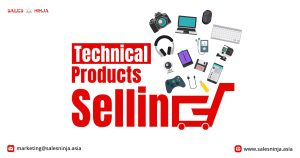Cold Calling: The 4 Mistakes You Don’t Want to Make and 4 Tricks You Do
You’ve been on the receiving end of a cold call before, right? You know how it makes the receiver of the call feel and how it usually ends. And now, the dreaded time has come – cold calling is now in your job scope. After, you’ve gotten over the initial reluctance/fear/anxiety that initially stopped you from starting on your lists of prospects – now what? Well, it’s time for you to make an impression. Do you open with a polite question about their day? Do you introduce yourself the minute you say hello? Whatever the first step is, the second step is bound to be:
“Is now a good time for a quick conversation?”
As a salesperson, you are more likely to build a relationship with your client if they are able to feel your sincerity and your passion. Asking politely if your prospect has time to talk is only…well…polite. Not only are you requesting for their time, but you are also asking for their attention and the opportunity to strike a sales deal. However, is it necessary to observe these rules when doing business? The business world is fast-paced. Do you have time to engage in small talk? You might have all the information, tips as well as tricks up your sleeve but are you able to build a connection with your clients’? Treat them the way they want to be treated – respectfully – by asking if they have the time for a call but make sure you take these tips to heart:
1. You do not want them to run.
By asking them if they have the time or if they are available for a chat, you are giving them a window with which they can escape. Nevertheless, if you block their exit effectively they will not be able to get out of some sort of agreement with you. Here are a few common objections (and possible counter-objections):
❌ “No, I am busy”: ✔️ “I’m sorry to be a bother! Let us reschedule for a different time. Would __PM on the ___ work?”
❌ “Sorry, I am in a meeting.” : ✔️ “No worries! I will drop you an email and follow up with you at a more convenient time! When would work for you?”
❌ “I am not interested.” : ✔️ “Let me say something more interesting, then.”
❌ “I do not need your product/service.” : ✔️ “That’s no problem. For new products, services, and offers, can I call you back?”
❌“Let me talk to my boss.” : ✔️ “If you give me his/her number, I can talk to him directly. It will save you some time.”
A trick is to start by asking a question that might produce the answer, “no”. For example: “This is not an unfortunate time to talk, is it?”. A little bit of reverse psychology here – by targeting people who might have “no” as a defensive response at hand, you are identifying the people who say no because they are used to saying no and leave your follow up as the real conversation opener. This will allow you to find out what their real response might be and you can take it from there.
2. The difference between “quick” and “necessary” is one fails and the other brings in sales.
Let’s be objective: if your call is going to be quick, how much information can you cram into it? Can you cover all your bases? Your client will probably think “quick” equates to a short, unimportant check-in and will not be paying much attention if your conversation goes on for too long. It also sounds like false advertising and from personal experience – you know how disdainful false advertising is. What does this result in? Disconnect and distrust. The next time they see your number or name pop up on their phone, they are more likely to ignore your call.
On the other hand, strong and simple words like “important”, “essential”, “necessary” are bound to catch their attention as it builds curiosity – “why is this call so important?”. You are offering a product and/or service – you want to start out by offering value. A general opening would only make your client feel as if they are simply “another one on your list” – even if they are, you don’t want them to feel that way right? Clients should be made to feel as if they are important – your relationship with your clients makes or break your business.
3. It’s okay to be a little bit crafty.
As important as it is to choose your words, how you deliver your message is equally significant. While we do not want to come off as sleazy or desperate, there are ways to guide the flow of your call to suit the direction you would like for it to go in. Let us break it down into the two different types of leads (yes, there is a third type but we will get to that soon): cold leads and warm leads.
Cold leads do not know you, your company nor what you are trying to sell. Imagine receiving a call only to find out that it is yet another salesperson trying to sell you insurance. Before they get down to their “latest offer”, they ask if you are free – what is your immediate response? Usually in the negative (unless you really, really need insurance). What is different about cold leads is that the ice has yet to be broken. As cold calls are largely to check on leads that might be interested in what you are selling, focus on delivering your value with a script that will organically generate buying signals.
Warm leads already know you and your company in addition to what you are trying to sell. How do you keep them on the phone for long enough to make your sales pitch when their mindset is, “Oh, I know what they want to sell and I know that I don’t want it”. This is where you can effectively employ the word “Quick”. For leads that are familiar, do not waste their time by regurgitating the same sales pitch you use for cold leads. Instead, make your call short and straight to the point – they know what you have already done, tell them what you are about to do and how they can relate to it.
4. Always be prepared.
It does not hurt to be prepared and you know it. How many times have you wowed your clients by answering their questions with research and information they were not expecting you to have? On the other hand, how many times have you failed a sales pitch because you could not answer questions they expected you to be able to? You want to make an impression in order to keep them on the phone – either by creating an instant connection or by creating curiosity. Why not do both at the same time? Lead with “Thank you for taking my call. The reason I am calling is …”. Not only are you being polite and respectful, you are also creating curiosity by giving them a third of the reason for calling. You give them the next part of the reason by demonstrating how the benefits of your product/service can positively affect them – with information on them or with market information that potentially links to them.
This is where studying and understanding qualified leads can come in handy. Qualified leads are leads that have already reached the buying stage. They are completely different from cold leads and only one step ahead of warm leads. Here is why studying qualified leads comes in handy:
- You understand the importance of a budget: Qualified leads are open about their budget as they are looking to buy your product or service. Cold and warm leads rarely disclose their budget so you will have to make an informed assumption. Prepare by analyzing the budgets of other similar companies and have a limit for discounts you can give (if any).
- You will be able to identify the key decision maker: Why waste your carefully crafted and worded sales pitch on someone who has little to no decision making power? Take the time to research and get into contact with the key decision-maker. While this may not always pan out, if you manage to get to the person directly under the key decision-maker, you are closer to closing your sales than if you were to speak to the department’s intern.
- You can answer the question of “do they need this?”: Clients have their go-to objections ready. A good salesperson will be able to answer all these objections and throw in a few of their own that the client might not have addressed. This is how you convince them that they need you.
Remember – if your client answers your call, they almost always have the time to talk. Why answer your phone if you do not? A cold-call is different from a presentation because you’re relying on audio cues to communicate your pitch.




